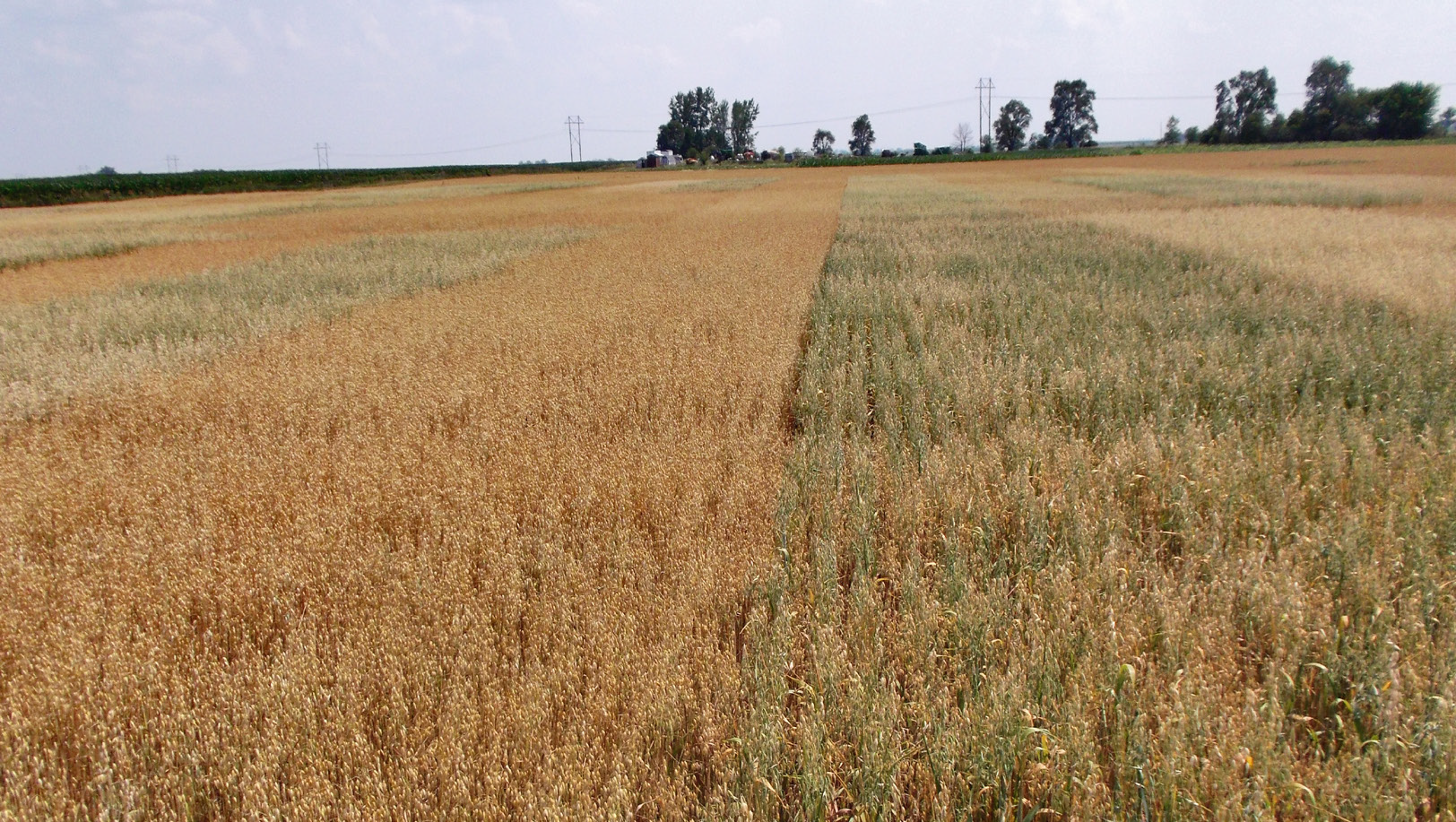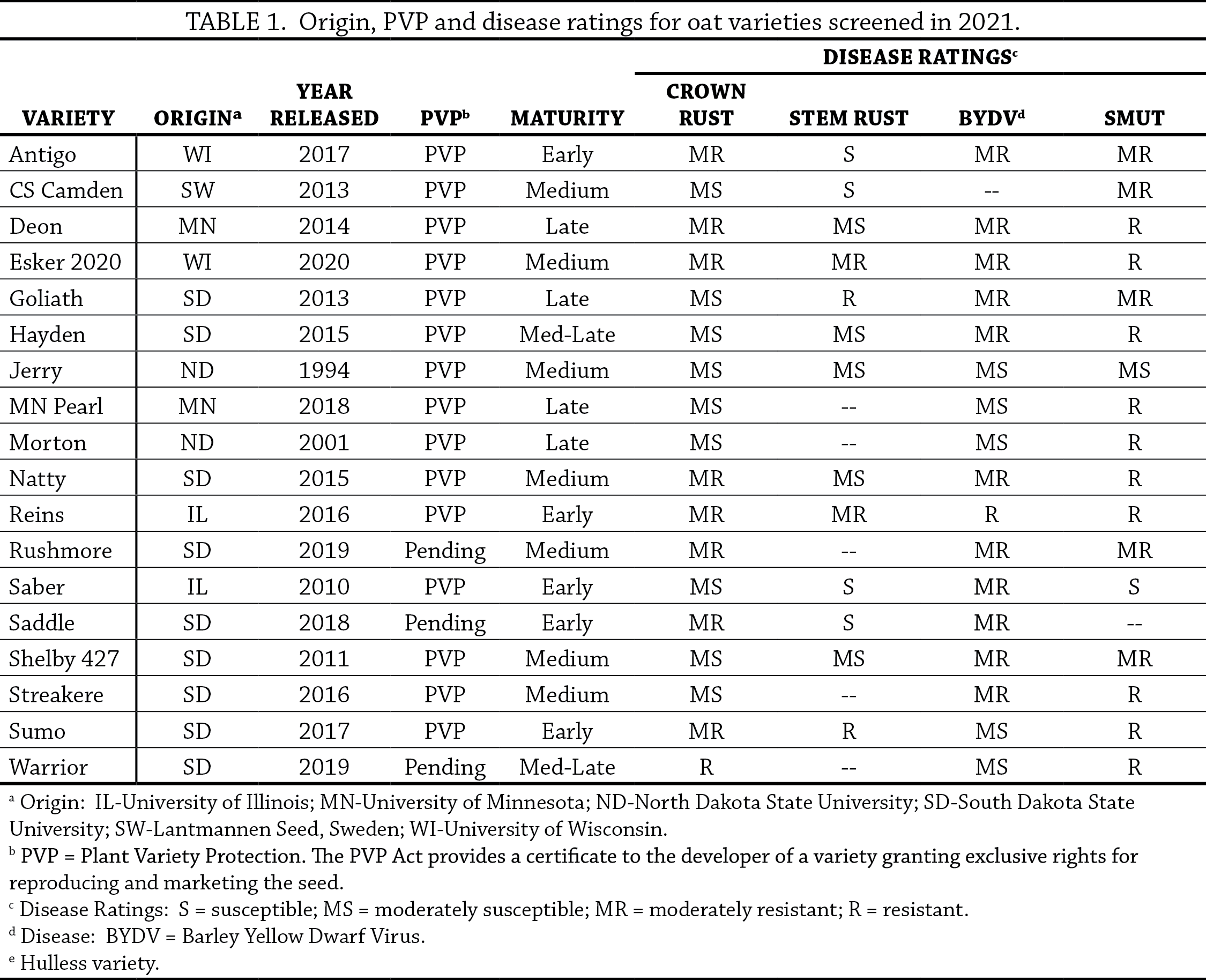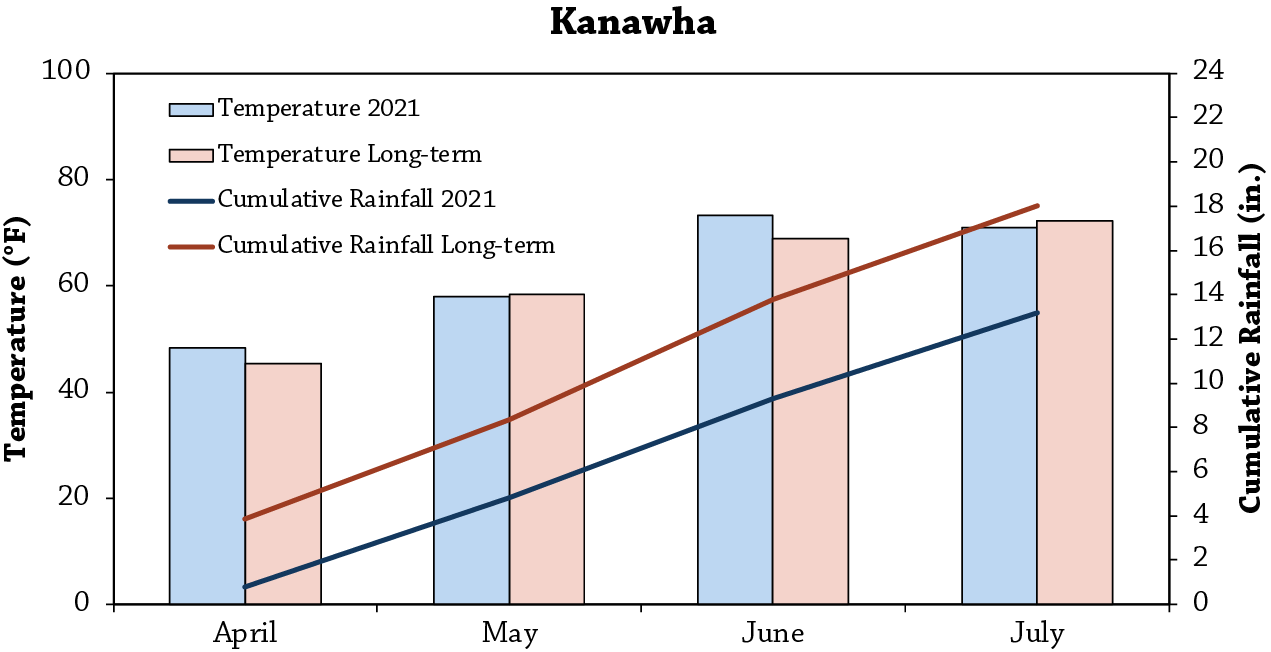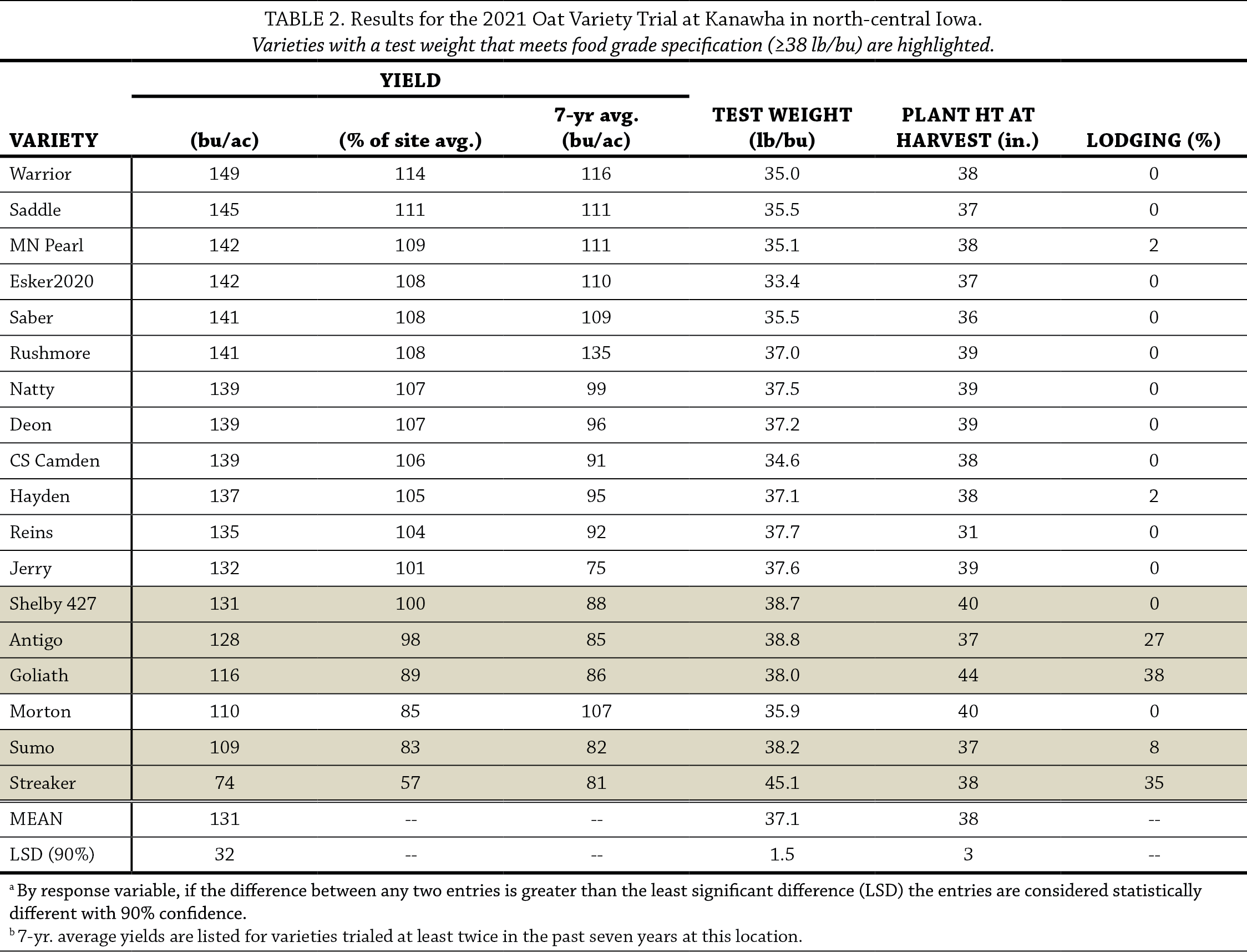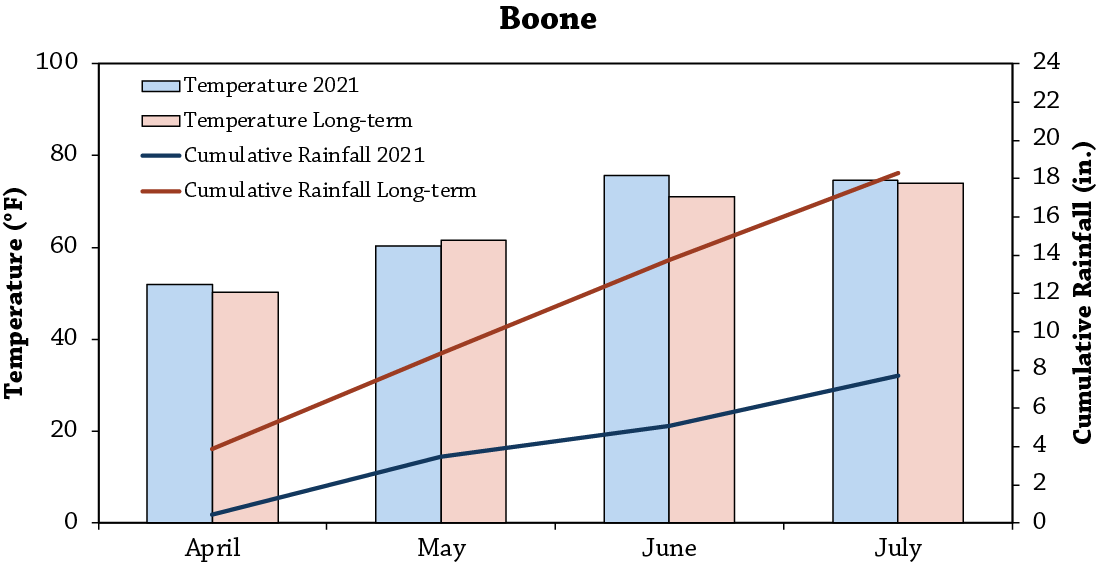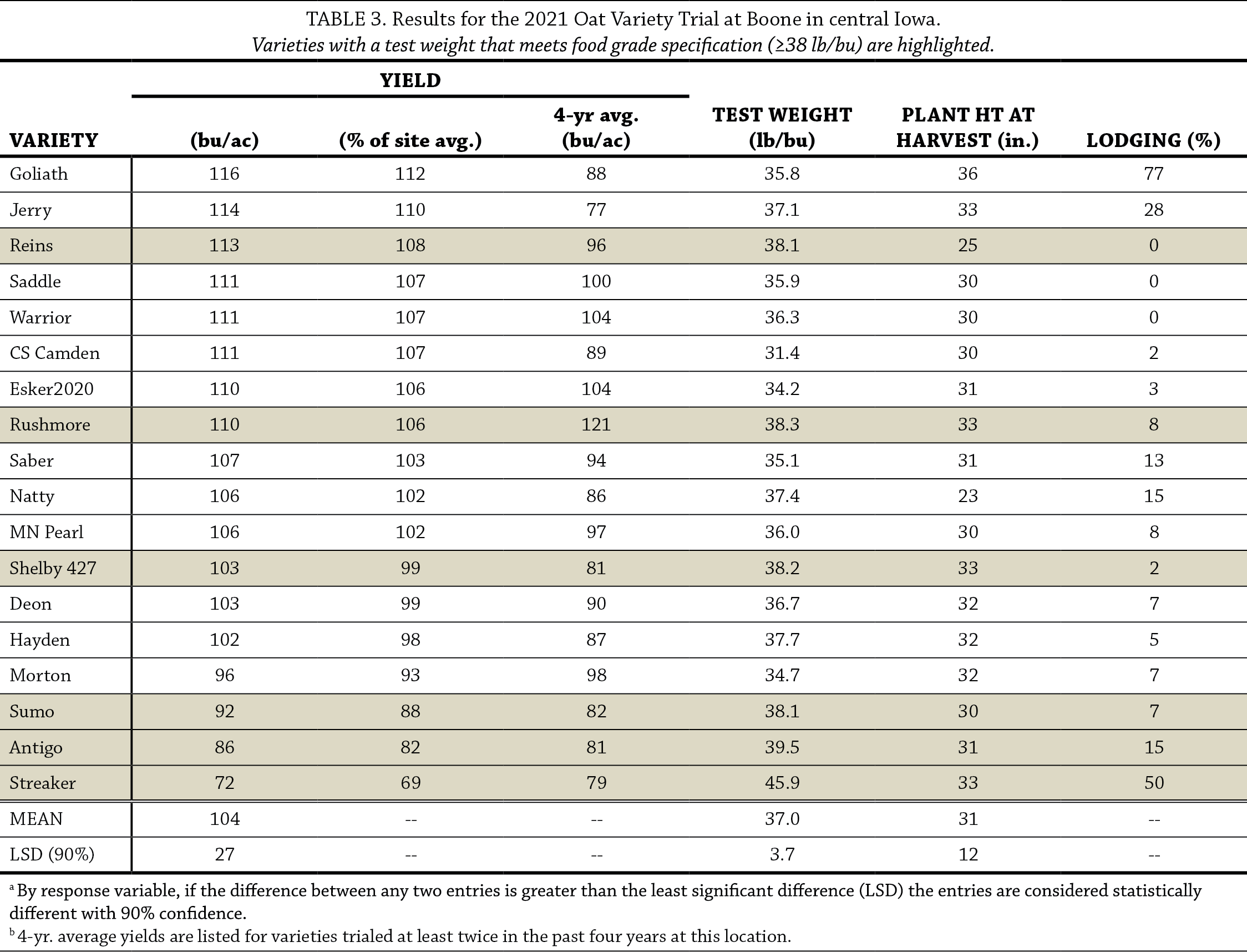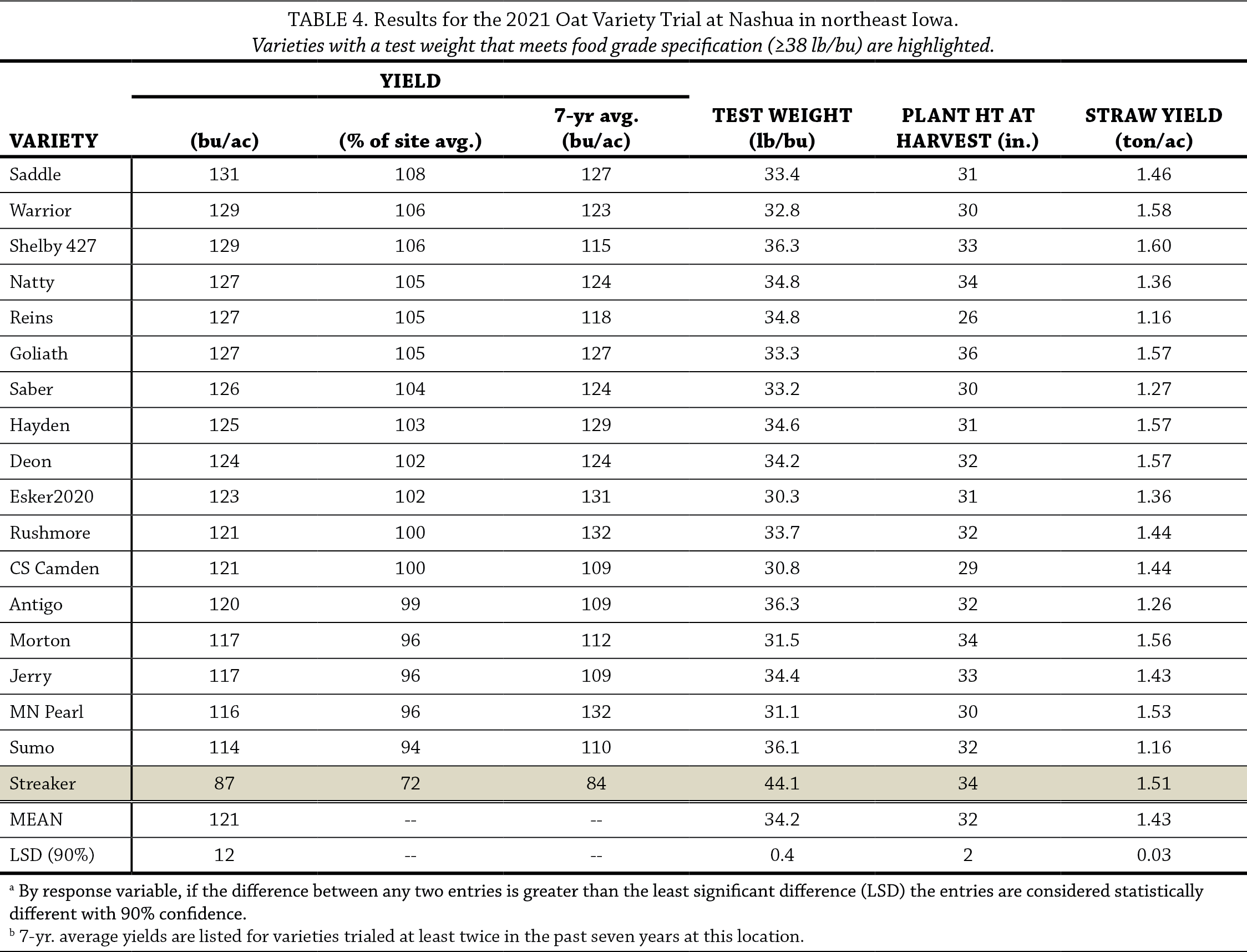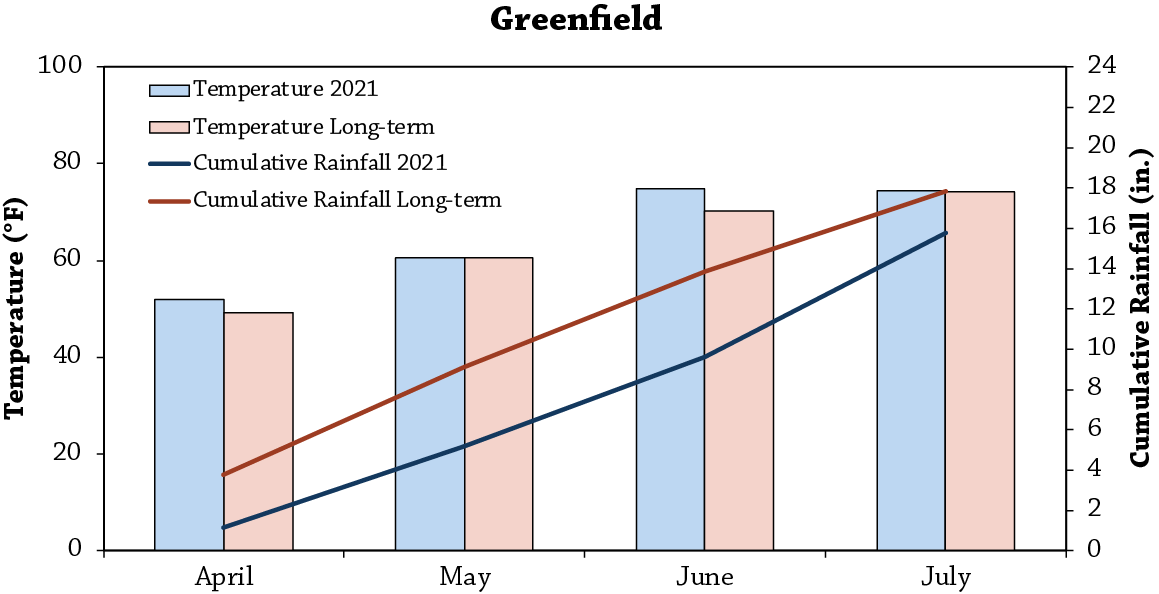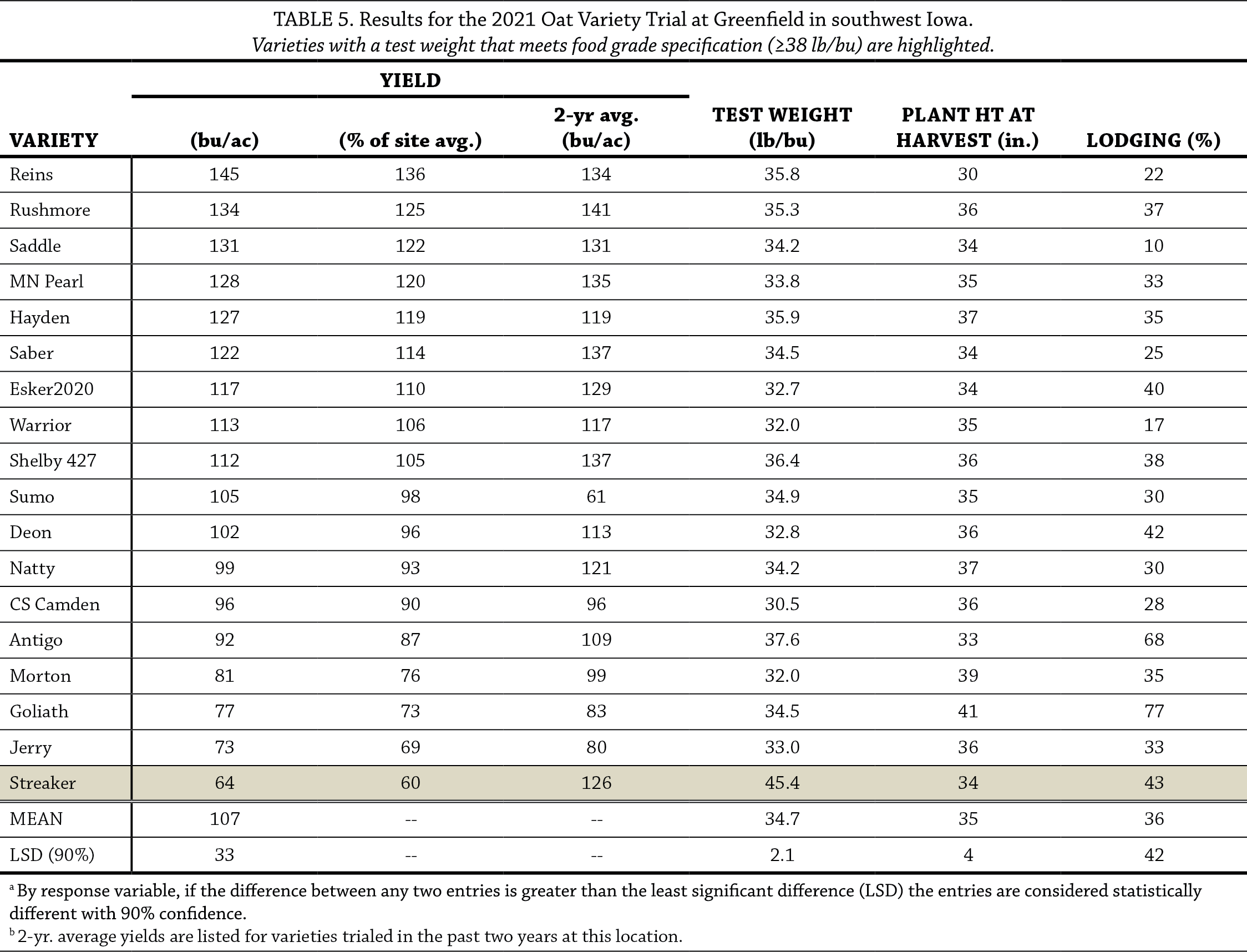This research was funded by Walton Family Foundation, Albert Lea Seed House, General Mills, Welter Seed and Honey Co., Meridian Seeds, Sponheim Seed, SDSU Seed Foundation, and Zabel Seeds.
In a Nutshell:
- 18 oat varieties were screened at four Iowa State University research farms.
Key Findings:
- Across varieties and sites, average oat yield was 116 bu/ac.
- Streaker (hulless variety) scored a test weight >40 lb/bu at each location; though, it was also the lowest yielding variety at each location. Sumo and Shelby 427 (hulled varieties) made food grade test weight specifications at two of the four research farms.
Background
Careful management and proper choice of variety can make oats a profitable crop due to their low input requirements and beneficial effects on succeeding crops in a rotation. Oats can be used for grain and straw production, as a companion crop to establish hay and pastures, or for early-season forage as hay or haylage. Because oats are harvested in late July to early August, field management options for the remainder of the season are numerous. These include establishment of a perennial forage or summer cover crop, as well as an opportunity for mid-season manure application. Planting oats before April 15 is recommended for optimal yields in Iowa. This helps avoid exposure to warmer weather during grain fill. Test weight is the most commonly used indicator of grain quality. High test-weight varieties should be chosen by growers who intend to market oat grain to food-grade buyers. Oat growth is regularly affected by rust and barley yellow dwarf virus. Variety resistance to these diseases should be considered. Another option is the use of a foliar fungicide applied at Feekes 9 growth stage, defined as flag leaf emerged with ligule visible.
In 2021, 180,000 acres of oats were planted in Iowa according to the USDA-National Agricultural Statistics Service. The state average yield for the year was 77 bu/ac; the five-year average yield is 71 bu/ac.[1]
Methods
Variety trials were conducted at four locations in 2021: ISU Northern Research Farm in Kanawha; ISU Ag Engineering and Agronomy Farm in Boone; ISU Northeast Research Farm in Nashua; ISU Southwest Research Farm in Greenfield. These variety trials build on previous trials conducted at Kanawha, Charles City, Boone, Nashua and Lewis from 2015¬–2020.[2–7] Information about each of the varieties trialed in 2021 can be found in Table 1.
Oat management information is provided with the results from each location. No herbicides or insecticides were applied at any location.
Data were analyzed using JMP Pro 15 (SAS Institute Inc., Cary, NC). Statistical significance is determined at P ≤ 0.10 level (unless otherwise noted) and means separations are reported using Tukey’s least significant difference (LSD).
Results and Discussion
Data were analyzed by location, and varieties are listed in order of yield performance at each location. Reported yields are corrected for 13% moisture. A “percentage of test average” calculation is included to aid in comparing varieties at each location. Rainfall and temperature data were accessed from the nearest weather station.[8] Rainfall in 2021 was well below historical averages, particularly at Boone and Nashua.
Streaker, a hulless variety, routinely yielded least but always scored the highest test weight at each location (>40 lb/bu). Five varieties at Kanawha and six varieties at Boone made a test weight of 38 lb/bu – the standard minimum that many food companies require before dockage is applied. A test weight of 36 lb/bu is a minimum processing facilities can use for food-grade milling and several varieties at each location made this test weight. The low number of varieties reaching food grade thresholds (38 lb/bu) in 2021 is likely, in part, due to the hot and dry June conditions at each site.
Lodging was highest at Greenfield which was harvested at least a week later than the rest of the sites. Across the three sites reporting incidence of lodging, Streaker appeared to be the most susceptible variety.
ISU Northern Research Farm, Kanawha
- Previous crop: Soybeans
- Replications: 3
- Harvested plot size: 5 ft x 46 ft
- Fertilizer applied: 79 lb N/ac as urea on March 31
- Tillage: Soil finisher on March 31
- Planting Date: Apr. 1., followed by cultipacker
- Row spacing: 7.5 in.
- Seeding rate: 4 bu/ac
- Seeding depth: 1 in.
- Harvest date: July 21
ISU Ag Engineering and Agronomy Farm, Boone
- Previous crop: Soybeans
- Replications: 3
- Harvested plot size: 5 ft x 51 ft
- Fertilizer applied: 30 lb N/ac; 100 lb P/ac; 25 lb S/ac on Apr. 3
- Tillage: Field cultivator on Apr. 5
- Planting Date: Apr. 5
- Row spacing: 7.5 in.
- Seeding rate: 4 bu/ac (3.5 bu/ac for Streaker only)
- Seeding depth: 1 in.
- Harvest date: July 22
ISU Northeast Research Farm, Nashua
- Previous crop: Soybeans
- Replications: 3
- Harvested plot size: 8 ft x 127 ft
- Fertilizer applied: 14 lb N/ac, 66 lb P/ac as MAP on Nov. 13, 2020 and 30 lb N/ac as urea on March 22, 2021
- Tillage: Field cultivator on March 22 and 29
- Planting Date: March 30, followed by cultipacker
- Row spacing: 7.5 in.
- Seeding rate: 4 bu/ac
- Seeding depth: 1 in.
- Harvest date: July 13
ISU Southwest Research Farm, Greenfield
- Previous crop: Soybeans
- Replications: 3
- Harvested plot size: 5 ft x 56 ft
- Fertilizer applied: 70 lb N/ac as urea on Apr. 1
- Tillage: Disked on Apr. 1
- Planting Date: Apr. 5 followed by cultipacker
- Row spacing: 7.5 in.
- Seeding rate: 4 bu/ac (3.5 bu/ac for Streaker only)
- Seeding depth: 1 in.
- Harvest date: July 28
References
- US Department of Agriculture-National Agricultural Statistics Service. Quick stats. USDA-National Agricultural Statistics Service. https://quickstats.nass.usda.gov/ (accessed October 2021).
- Gailans, S., S. Carlson, K. Pecinovsky and B. Lang. 2015. Oat Variety and Fungicide Trials. Practical Farmers of Iowa Cooperators’ Program. https://practicalfarmers.org/research/oat-variety-and-fungicide-trials/ (accessed October 2021).
- Gailans, S., S. Carlson, M. Schnabel, K. Pecinovsky, B. Lang and W. Johnson. 2016. Oat Variety Trials 2016. Practical Farmers of Iowa Cooperators’ Program. https://practicalfarmers.org/research/oat-variety-trials-2016/ (accessed October 2021).
- Gailans, S., S. Carlson, M. Schnabel, K. Pecinovsky, B. Lang and W. Koehler. 2017. Oat Variety and Fungicide Trials 2017. Practical Farmers of Iowa Cooperators’ Program. https://practicalfarmers.org/research/oat-variety-and-fungicide-trials-2017/ (accessed October 2021).
- Gailans, S., S. Carlson, M. Schnabel, K. Pecinovsky and W. Johnson. 2018. Oat Variety Trial 2018. Practical Farmers of Iowa Cooperators’ Program. https://practicalfarmers.org/research/oat-variety-trial-2018/ (accessed October 2021).
- Gailans, S., S. Carlson, M. Schnabel, K. Pecinovsky and W. Koehler. 2019. Oat Variety Trial 2019. Practical Farmers of Iowa Cooperators’ Program. https://practicalfarmers.org/wpcontent/uploads/2019/12/PFI2019_ResearchReport_Oat-Variety-Trial.pdf (accessed October 2021).
- Gailans, S., L. English, M. Schnabel, K. Pecinovsky, D. Maxwell, R. Rosmann and M. Smith. 2020. Oat Variety Trial 2020. Practical Farmers of Iowa Cooperators’ Program. https://practicalfarmers.org/research/oat-variety-trial-2020/ (accessed October 2021).
- Iowa Environmental Mesonet. 2021. Climodat Reports. Iowa State University. http://mesonet.agron.iastate.edu/climodat/ (accessed August 2021).


